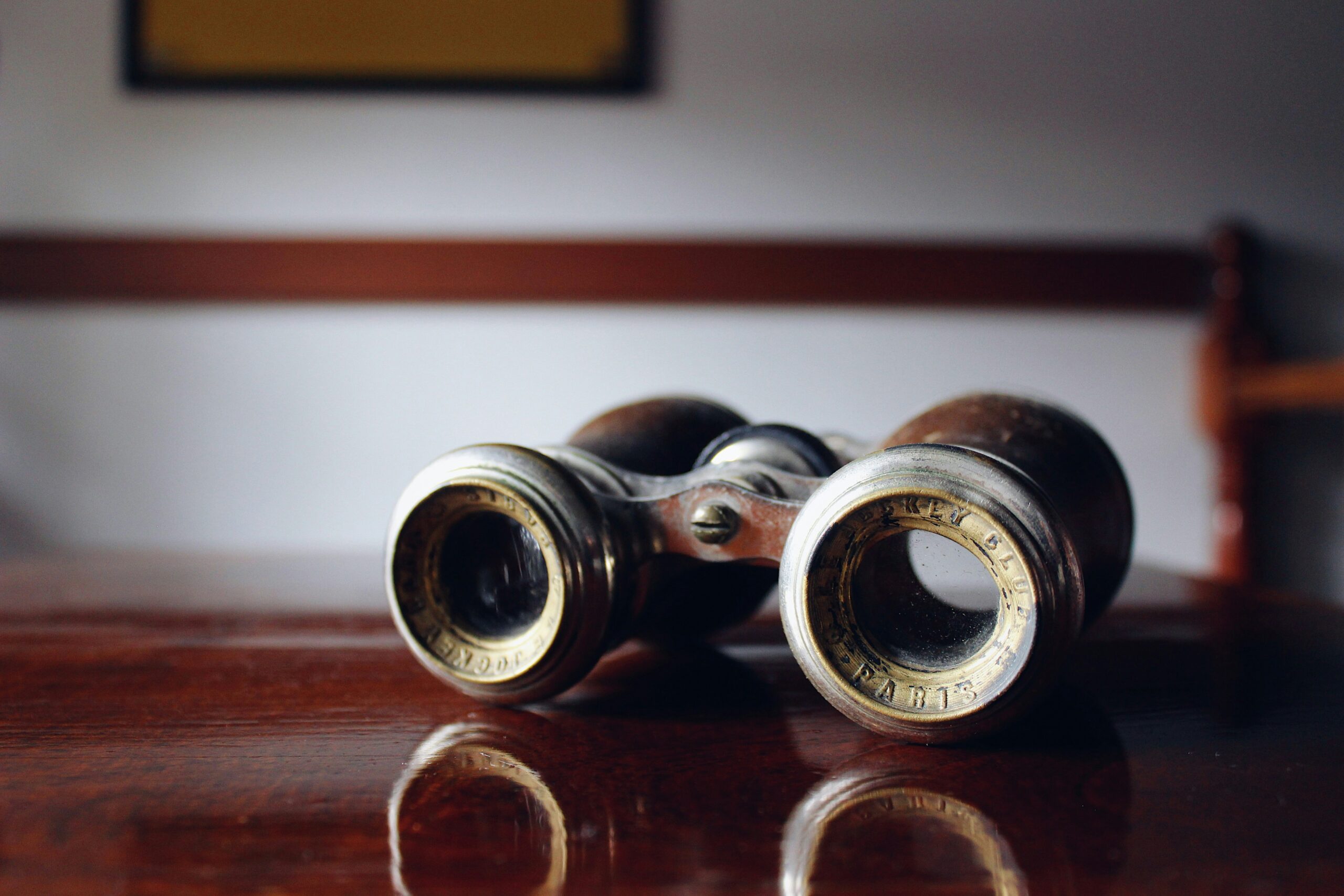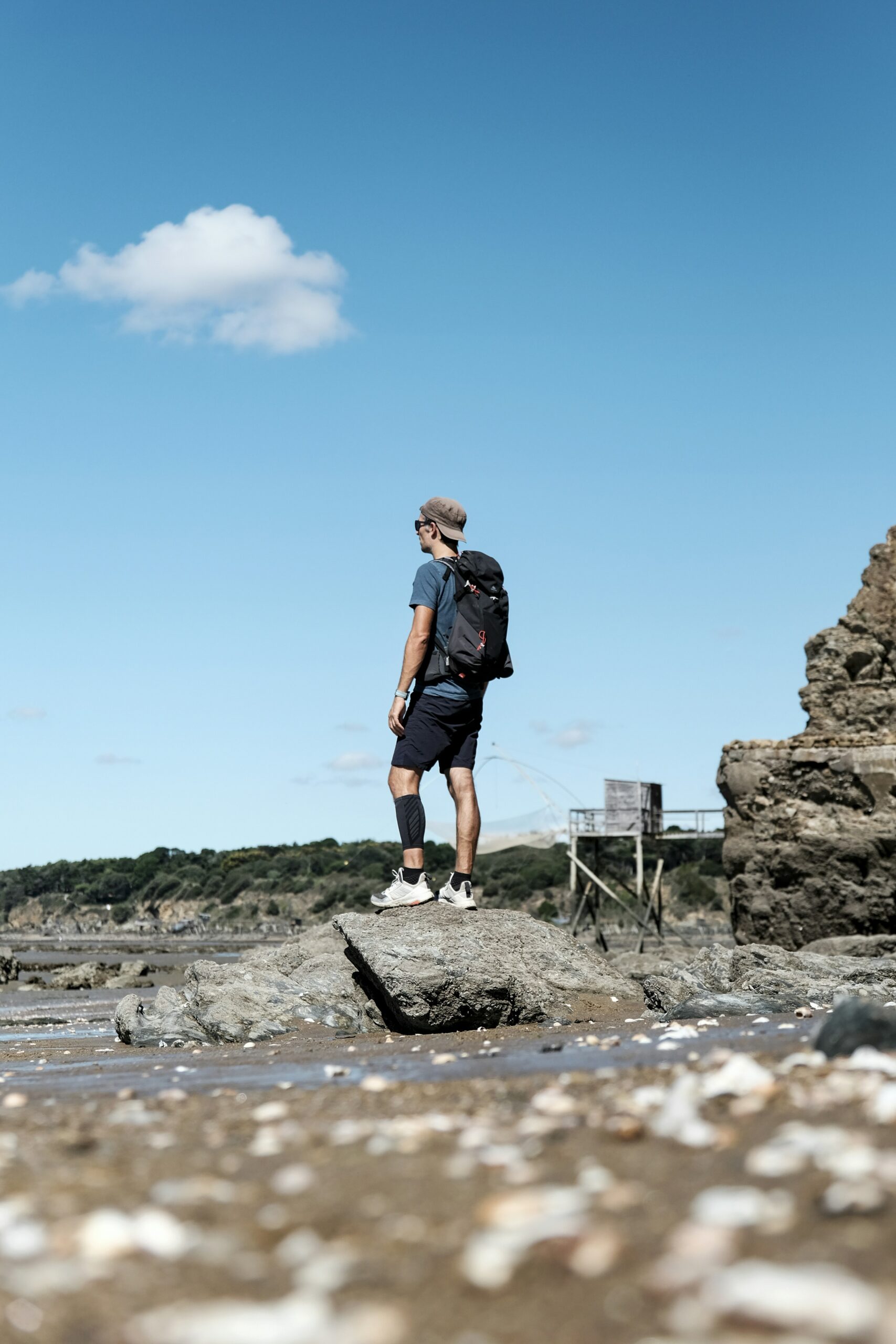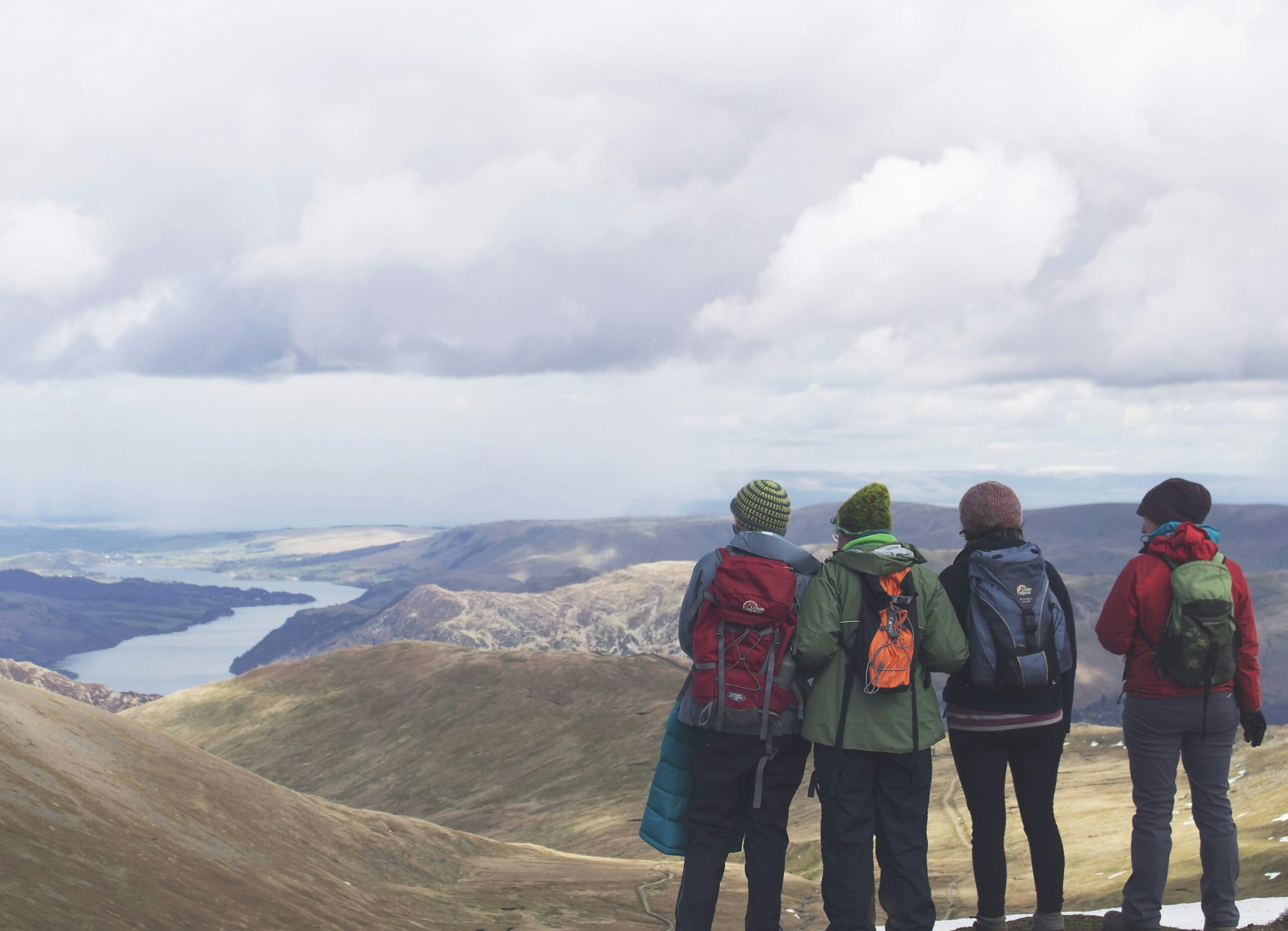If you’re an avid backpacker and love capturing breathtaking moments of nature up close, you’ve probably wondered about the best binocular size for your adventures. Finding the perfect balance between portability and functionality can be a daunting task, but fear not – we’re here to help! In this article, we’ll explore the factors to consider when choosing a binocular size for backpacking, so you can make an informed decision and truly enhance your outdoor experience. From magnification power to weight and compactness, we’ve got you covered. So, grab your backpack and let’s embark on this journey to find the ultimate binocular size for your backpacking escapades!
Understanding Binocular Sizes
Binoculars come in various sizes, each offering different features and benefits. Understanding these sizes is essential to make an informed decision when choosing the right binoculars for your backpacking adventures.
Physical Size of Binoculars
The physical size of binoculars refers to their overall dimensions, including length, width, and height. This aspect is crucial for backpacking because you want binoculars that are compact and lightweight, making them easy to carry and store in your backpack.
Objective Lens Diameter
Another vital factor in binocular sizes is the objective lens diameter. This measurement, usually stated in millimeters, indicates the size of the front lenses of the binoculars. The objective lens diameter affects how much light enters the binoculars, consequently influencing the image brightness and clarity.
Magnification Power
When it comes to binoculars, magnification power determines how much closer the viewed object appears. Higher magnification can be beneficial for spotting distant wildlife or observing details, but it can also make your image shakier and decrease the field of view.
Exit Pupil and Eye Relief
The exit pupil is the small, circular area of light that you see when you hold the binoculars at arm’s length. It is calculated by dividing the objective lens diameter by the magnification power. A larger exit pupil allows more light to enter your eyes, resulting in a brighter image, especially in low-light conditions.
Eye relief refers to the distance between your eyes and the binoculars’ eyepiece lens. It is important to consider, especially if you wear glasses. Sufficient eye relief ensures that you can comfortably view the entire field of view without straining your eyes or removing your glasses.
Field of View
The field of view is the width of the area visible through the binoculars at a specified distance. A wider field of view allows you to see more of your surroundings, which is advantageous for tracking moving subjects or scanning vast landscapes during your backpacking trips.
Why Size Matters in Backpacking
When it comes to backpacking, the size of your gear can greatly impact your overall experience. Binoculars are no exception. Here are some reasons why size matters when choosing binoculars for backpacking.
Weight Considerations
Backpacking involves carrying everything you need on your back for extended periods. Every ounce counts, and bulky or heavy binoculars can quickly become a burden. Choosing lightweight binoculars will minimize fatigue and allow you to enjoy your adventures without feeling weighed down.
Space Limitations
Space is often limited in a backpack, with essentials like food, clothing, and shelter taking priority. Opting for compact binoculars that can easily fit in your backpack’s pockets or compartments will ensure that you have enough space for other necessary items.
Ease of Carrying
Hiking through rugged terrain requires gear that is easy to carry. Large or cumbersome binoculars may get in the way or snag on branches and rocks. Opting for a smaller size ensures that your binoculars won’t hinder your movements or cause unnecessary inconvenience during your backpacking trips.
Durability and Design
The size of binoculars can also impact their durability and design. Smaller binoculars may be more prone to damage if not built with sturdy materials. It is essential to consider the overall build quality and robustness of the binoculars, especially if you anticipate challenging outdoor conditions.

Ideal Binocular Sizes for Backpacking
Based on the considerations discussed earlier, there are three main binocular sizes that are ideal for backpacking: compact, medium-size, and full-size.
Compact Binoculars
Compact binoculars are the smallest option and are perfect for backpackers who prioritize minimalism and weight savings. They typically have smaller objective lens diameters, ranging from 20mm to around 32mm. Compact binoculars are easy to pack, lightweight, and fit comfortably in your pocket or backpack.
Medium-Size Binoculars
Medium-size binoculars strike a balance between portability and performance. With objective lens diameters ranging from 32mm to 42mm, they offer a good compromise between image brightness and compactness. Medium-size binoculars provide an excellent field of view and are suitable for backpackers who value versatility.
Full-Size Binoculars
Full-size binoculars are the largest option, with objective lens diameters of 42mm and above. While they may be bulkier and heavier, they offer optimal image brightness, better low-light performance, and a wider field of view. Full-size binoculars are ideal for backpackers who prioritize image quality and are willing to make slightly more space in their backpack for superior optics.
Compact Binoculars for Backpacking
Compact binoculars have several benefits that make them a popular choice for backpackers.
Benefits of Compact Binoculars
-
Portability: Compact binoculars are incredibly portable due to their smaller size and lighter weight. They are easy to carry on extended hikes and take up minimal space in your backpack.
-
Ease of Use: With their compact design, these binoculars can be quickly accessed whenever needed. They are convenient to handle and don’t require much space to use effectively.
-
Versatility: Compact binoculars are not only suitable for backpacking but are also great for various outdoor activities such as birdwatching, wildlife observation, and sporting events.
Drawbacks of Compact Binoculars
-
Limited Performance in Low-Light Conditions: Due to their smaller objective lens diameters, compact binoculars may not perform as well in low-light conditions compared to larger options.
-
Narrower Field of View: The smaller objective lens diameter also results in a narrower field of view, making it more challenging to track fast-moving subjects across vast landscapes.
Recommended Compact Binocular Models
-
Model A: Compact binocular model A offers a lightweight and compact design with a 32mm objective lens diameter, providing a good balance between portability and performance.
-
Model B: For those seeking the utmost portability, model B features a 20mm objective lens diameter, making it exceptionally lightweight and easy to carry.

Medium-Size Binoculars for Backpacking
Medium-size binoculars offer a versatile option for backpackers who prioritize a balance between portability and performance.
Benefits of Medium-Size Binoculars
-
Enhanced Image Brightness: With larger objective lens diameters, medium-size binoculars offer better image brightness compared to compact models, especially in low-light conditions.
-
Wider Field of View: Medium-size binoculars provide a wider field of view, allowing you to observe your surroundings more effectively and track moving subjects with ease.
-
Suitable for Different Uses: These binoculars are ideal for a range of outdoor activities, including backpacking, wildlife observation, and stargazing.
Drawbacks of Medium-Size Binoculars
- Slightly Bulkier and Heavier: Compared to compact binoculars, medium-size models are slightly bulkier and heavier. While still portable, they may require a bit more space in your backpack and can contribute to additional weight.
Recommended Medium-Size Binocular Models
-
Model C: This medium-size binocular model boasts a 42mm objective lens diameter, providing excellent image brightness and a wider field of view.
-
Model D: For backpackers seeking a balance between portability and performance, model D features a 32mm objective lens diameter, making it lightweight and easy to carry while still delivering decent image quality.
Full-Size Binoculars for Backpacking
Full-size binoculars offer exceptional image quality and a superior viewing experience at the cost of added weight and bulkiness.
Benefits of Full-Size Binoculars
-
Superior Image Brightness: Full-size binoculars feature larger objective lens diameters, resulting in superior image brightness, especially in low-light conditions. This makes them ideal for nighttime wildlife observations and stargazing.
-
Wider Field of View: With their larger lenses, full-size binoculars offer a wider field of view, enabling you to capture more of your surroundings and spot subjects quickly.
-
Optimal Image Quality: Full-size binoculars generally provide sharper and clearer images, as they often incorporate advanced optics and coatings.
Drawbacks of Full-Size Binoculars
- Bulkier and Heavier: The larger size and weight of full-size binoculars can impact your backpacking experience. They may require additional space in your backpack and can contribute to overall fatigue when carrying them for extended periods.
Recommended Full-Size Binocular Models
-
Model E: Featuring a 50mm objective lens diameter, model E offers outstanding image brightness, making it perfect for stargazing and low-light wildlife observations.
-
Model F: For backpackers who prioritize image quality and a wider field of view, model F boasts a 42mm objective lens diameter, striking a good balance between portability and performance.

Factors to Consider When Choosing Binocular Size
Choosing the right binocular size for backpacking involves considering several factors beyond the physical characteristics of the binoculars.
Purpose of Use
Think about the specific activities you plan on using the binoculars for. Consider whether you’ll primarily be observing distant wildlife, enjoying scenic landscapes, or indulging in stargazing during your backpacking trips. Tailoring the binocular size to your intended purpose will ensure a more enjoyable experience.
Personal Comfort and Ease of Use
Everyone has different preferences and comfort levels when it comes to handling and using binoculars. Consider factors such as the weight of the binoculars, the grip design, and the adjustability of the eyepieces to find a size that feels comfortable and intuitive for you.
Budget
Budget is an important factor to consider when choosing binoculars. Compact binoculars are generally more affordable compared to their larger counterparts. Set a realistic budget and explore options within your price range to find the best binocular size that suits your needs.
Your Physical Strength
It’s crucial to consider your physical strength and abilities when selecting the right binocular size. If you have any physical limitations or struggles with carrying heavy objects for extended periods, opting for a smaller and lighter binocular size will ensure a more comfortable and enjoyable backpacking experience.
How to Properly Store Binoculars while Backpacking
Properly storing and protecting your binoculars is essential during backpacking trips to prevent damage and ensure their longevity.
Using Binocular Cases
Investing in a quality binocular case designed specifically for your binocular size is highly recommended. These cases provide padded protection and help secure the binoculars in your backpack, keeping them safe from impacts, dust, and other potential hazards.
Proper Positioning in the Backpack
When packing your binoculars, try to position them in a way that minimizes movement and prevents them from shifting around. Placing them in a dedicated pocket or using dividers can help keep them secure and prevent any potential damage.
Handling and Care Tips
When using your binoculars, handle them with care to avoid dropping or knocking them against hard surfaces. Additionally, avoid exposing them to extreme temperatures, excessive moisture, or harsh conditions that could damage the lenses or internal components.
How to Clean and Maintain Binoculars
Regular cleaning and maintenance are crucial to keeping your binoculars in optimal condition and ensuring clear, sharp images.
Cleaning the Lenses
Use a soft, lint-free cloth or lens cleaning solution specifically made for optical lenses to gently remove dust, fingerprints, or smudges from the lenses. Avoid using abrasive materials or harsh chemicals that could scratch the lens coatings.
Checking the Focus and Alignment
Periodically check the focus and alignment of your binoculars to ensure optimal image quality. If you notice any issues, such as blurry images, double vision, or misaligned barrels, consult the manufacturer’s instructions or seek professional servicing.
Protecting from Moisture and Dust
Moisture and dust can significantly impact the performance of your binoculars. Consider using lens caps and protective covers when not in use to prevent dust particles from settling on the lenses. Additionally, store your binoculars in a dry environment to avoid moisture damage.
Conclusion: The Best Binocular Size for Backpacking
Choosing the best binocular size for backpacking ultimately depends on your specific preferences and needs. Compact binoculars are perfect for minimalists who prioritize portability, while medium-size binoculars strike a balance between versatility and performance. For those seeking the utmost image quality and don’t mind carrying slightly more weight, full-size binoculars offer superior brightness and a wider field of view.
When making your decision, consider the purpose of use, personal comfort, budget, and your physical strength. Properly storing and caring for your binoculars, regardless of size, will contribute to their longevity and ensure clear, sharp images during your backpacking adventures. Remember, the right binocular size can enhance your overall outdoor experience, allowing you to fully immerse yourself in the beauty of nature.
